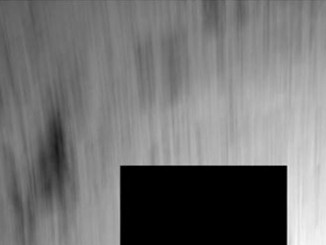
Images taken by Philae’s ROsetta Lander Imaging System, ROLIS, trace the lander’s descent to the first landing site, Agilkia, on Comet 67P/Churyumov–Gerasimenko on 12 November 2014. The first image was taken just over 3 kilometres (2 miles) from the comet, and indicates the position of Agilkia and the area covered by the next image in the sequence, taken just 67 metres away. The six images that follow were taken at approximately 10 second intervals prior to landing, with the final image of the sequence acquired 9 metres above the touchdown site. The time the images were acquired, along with distance from the surface and image resolution, are marked on each image. The final slide is annotated with the estimated touchdown position and orientation of Philae, which has been calculated to within ±20 centimetres.
The images taken shortly before touchdown progressively reveal a surface comprising metre-size blocks of diverse shapes and random orientations, coarse regolith with grain sizes of 10–50 centimetres and, in the closest image, granules less than 10 centimetres across. The regolith in this region is thought to extend to a depth of 2 metres in places, but seems to be free from fine-grained dust deposits at the resolution of the images.
The largest boulder, seen only in the images taken from distances between 67.4 metres and 28.9 metres, measures about 5 metres high, with a peculiar bumpy structure and fracture lines running through it that suggest erosional forces are working to fragment the comet’s boulders into smaller pieces. The boulder also has a tapered ‘tail’ of debris behind it, yielding clues as to how particles lifted up from one part of the eroding comet are deposited elsewhere.



